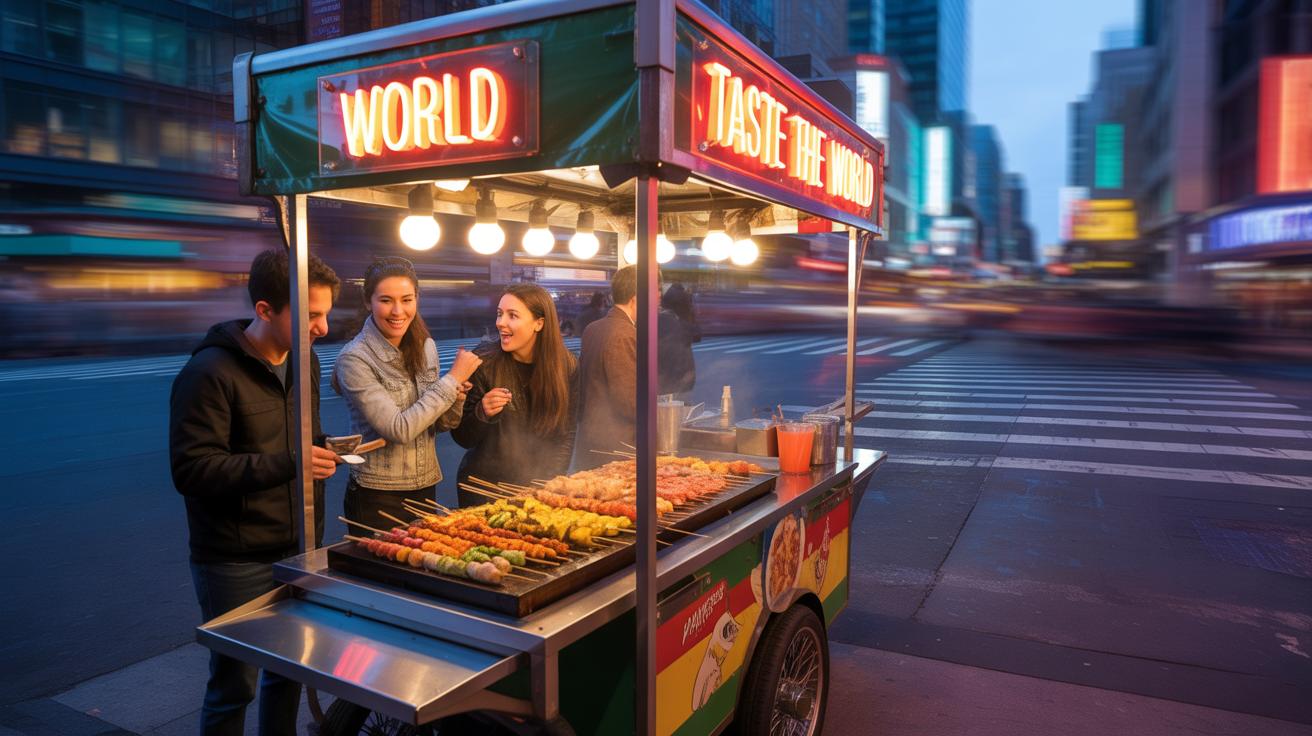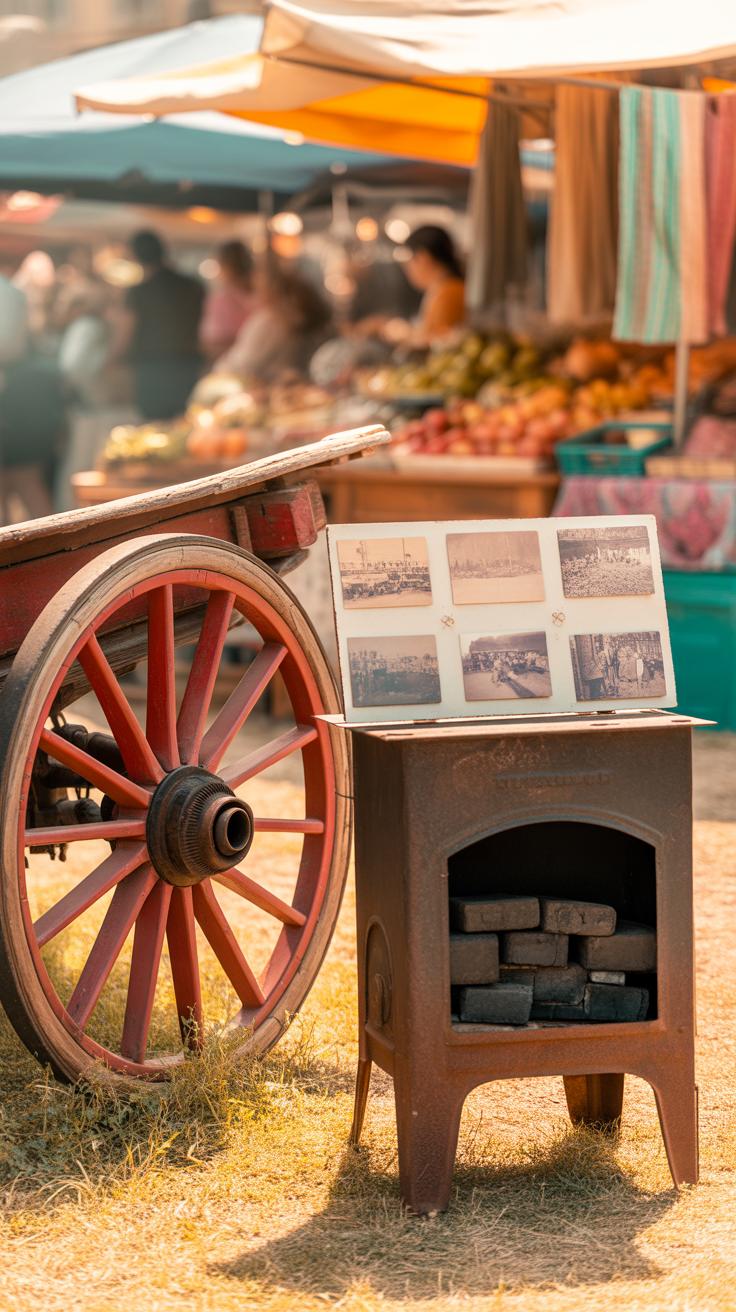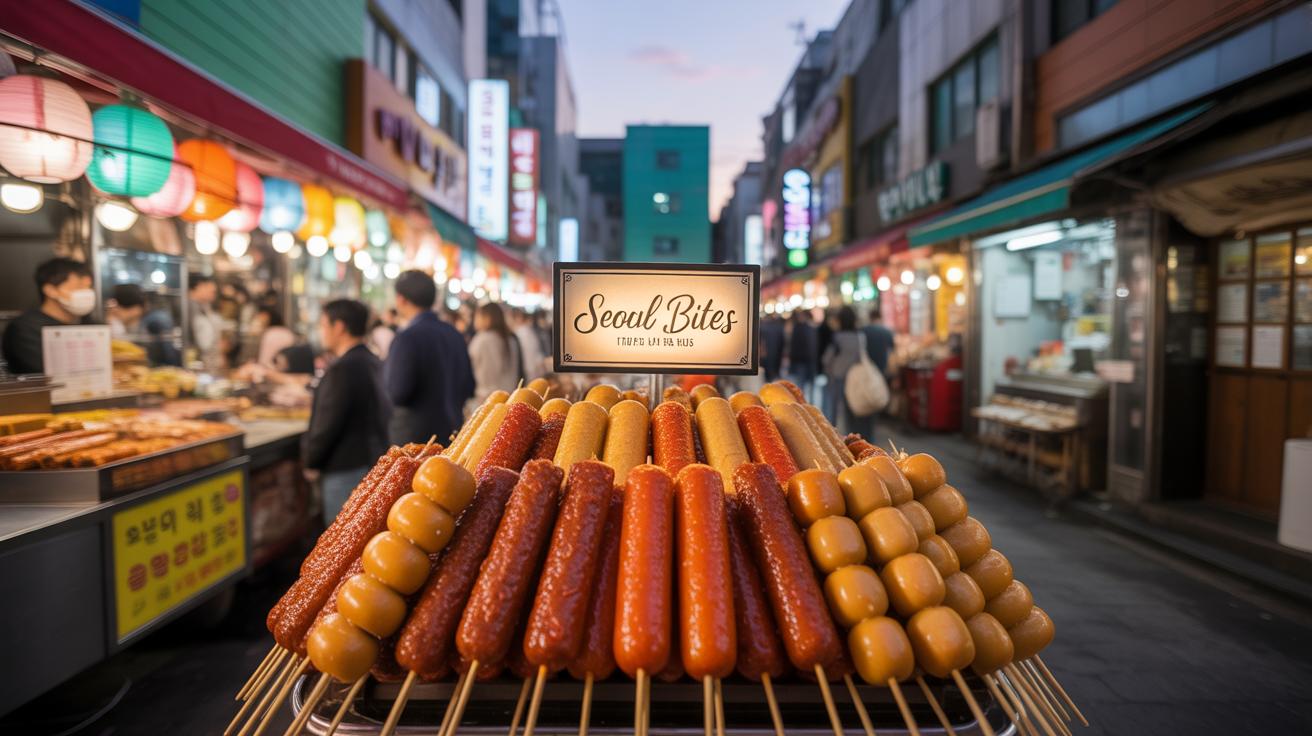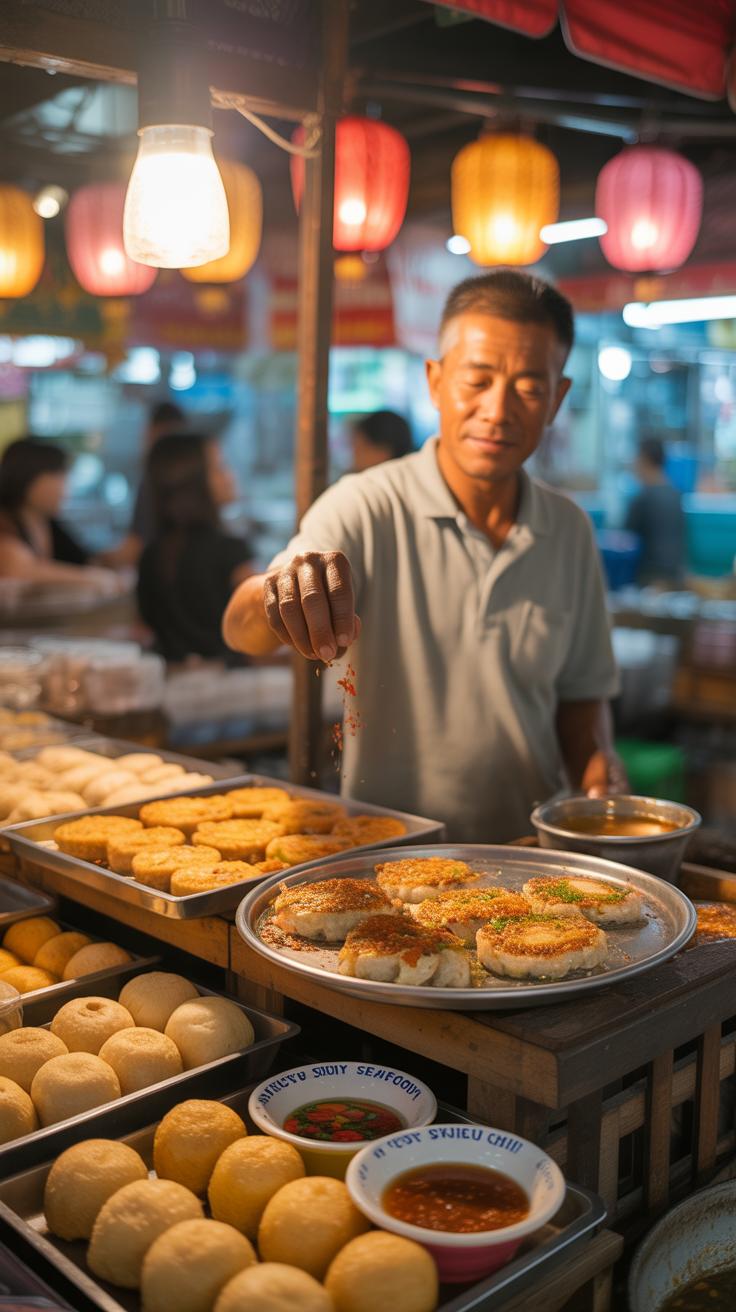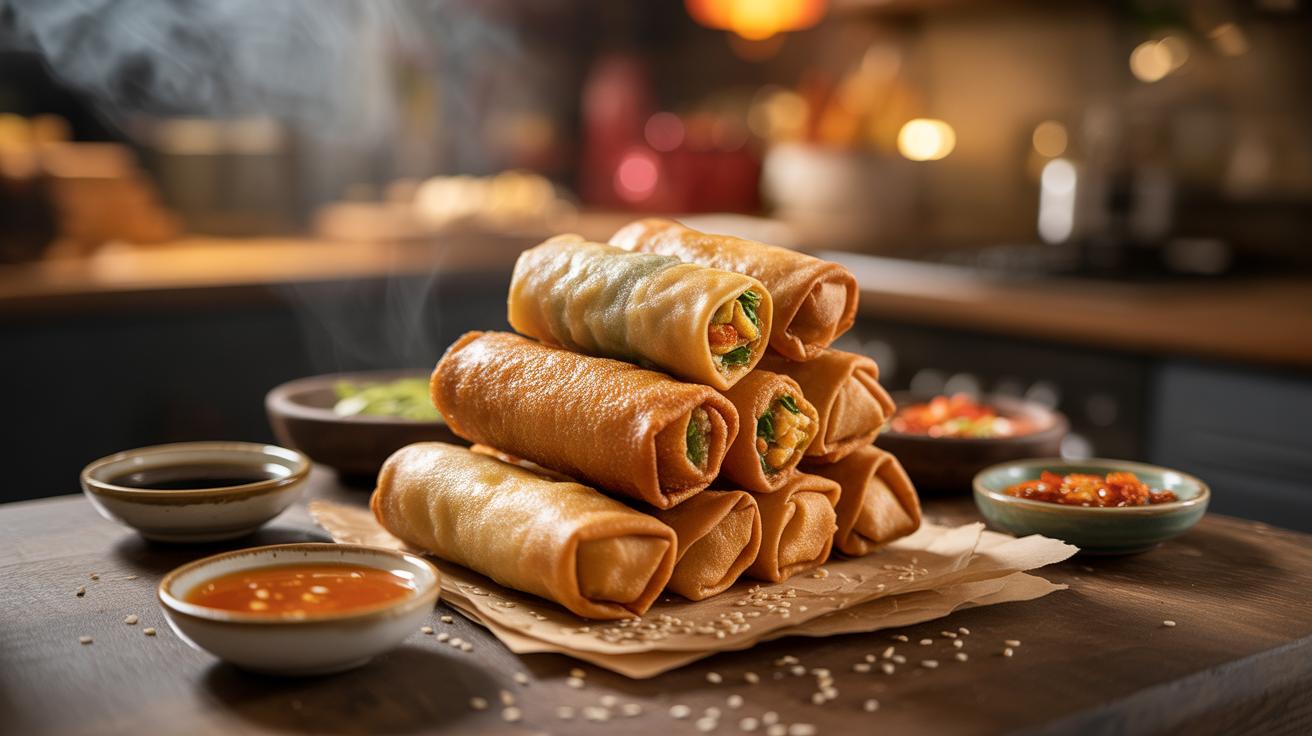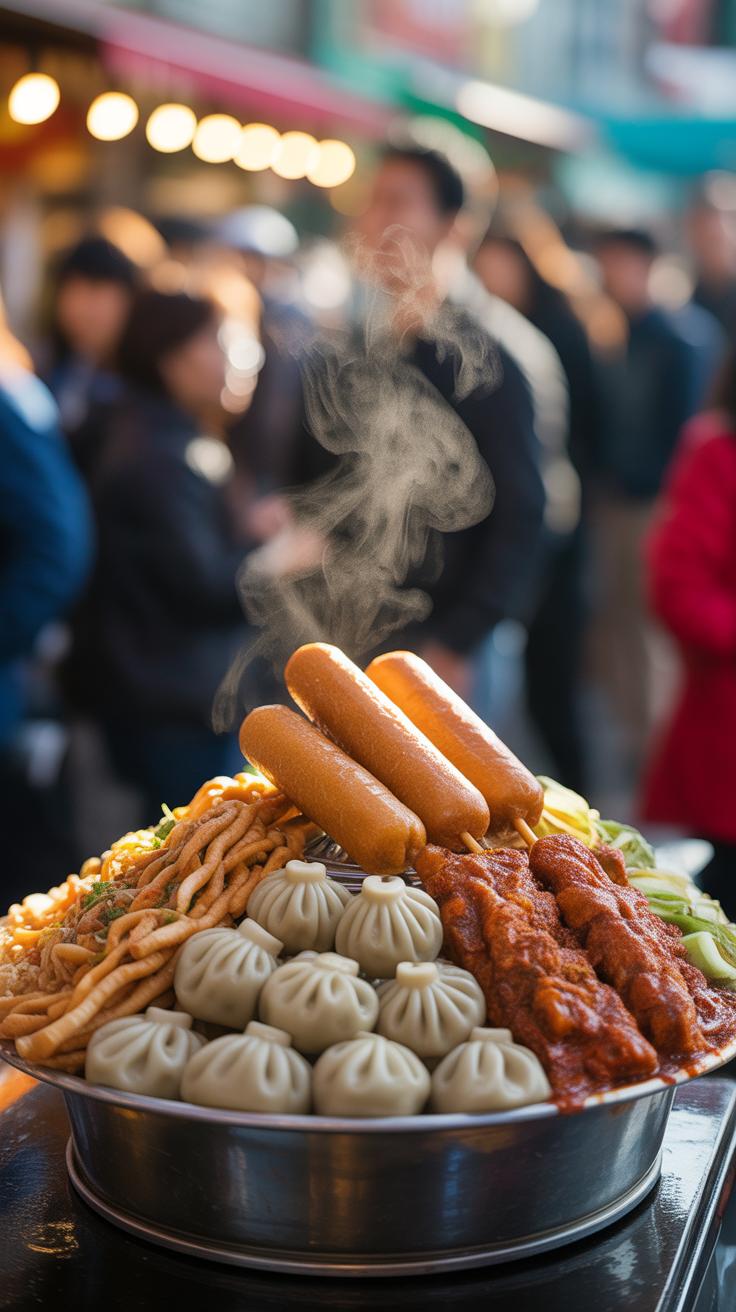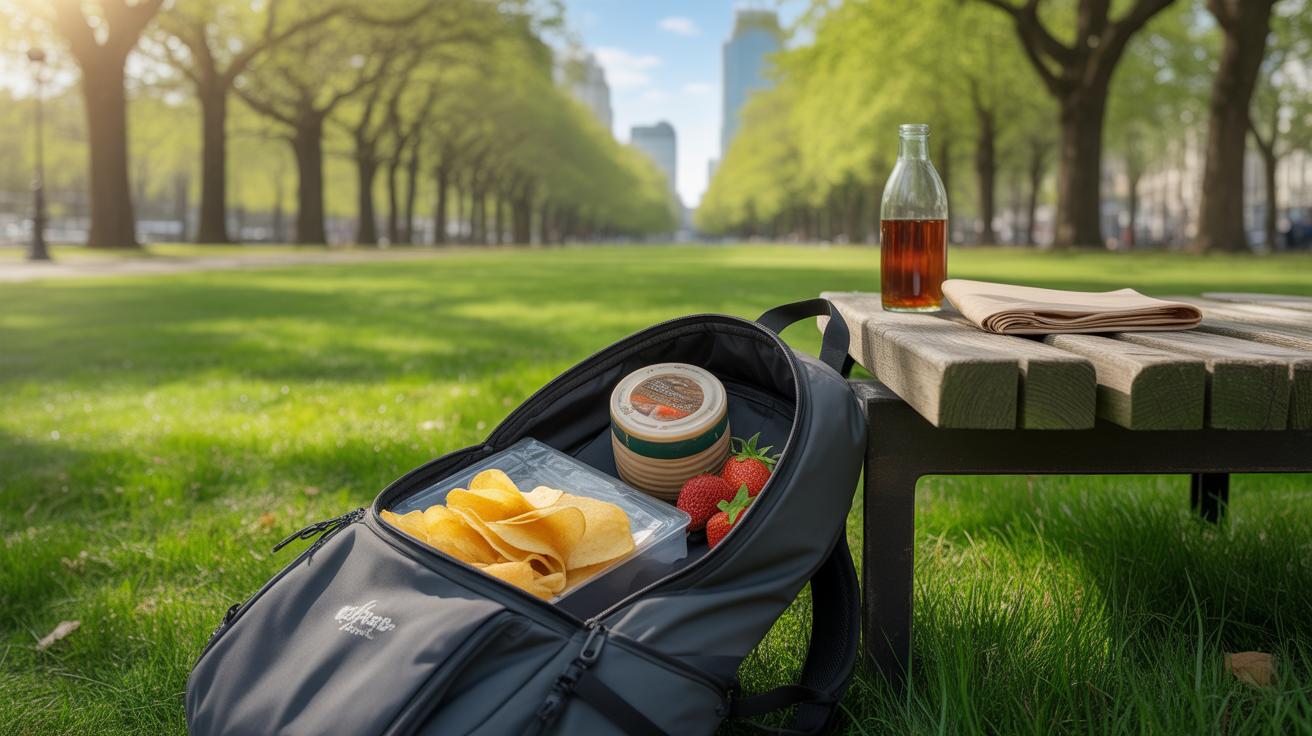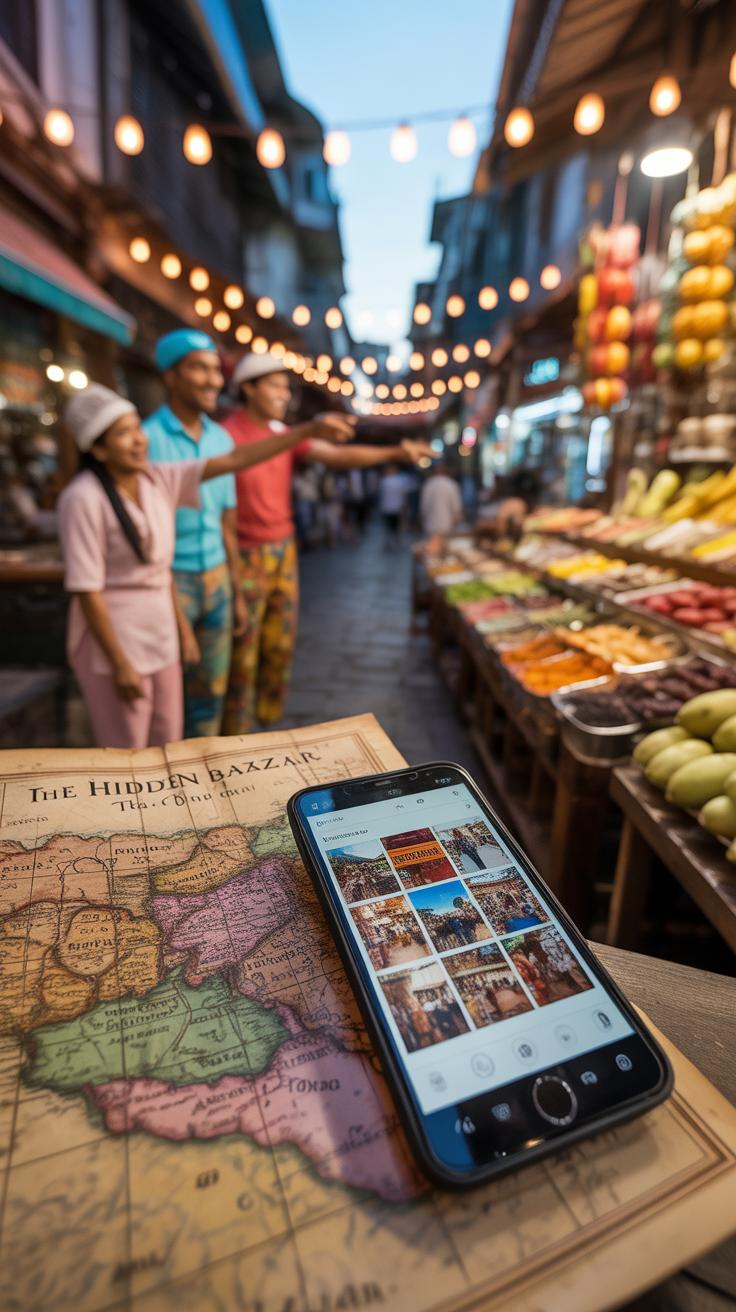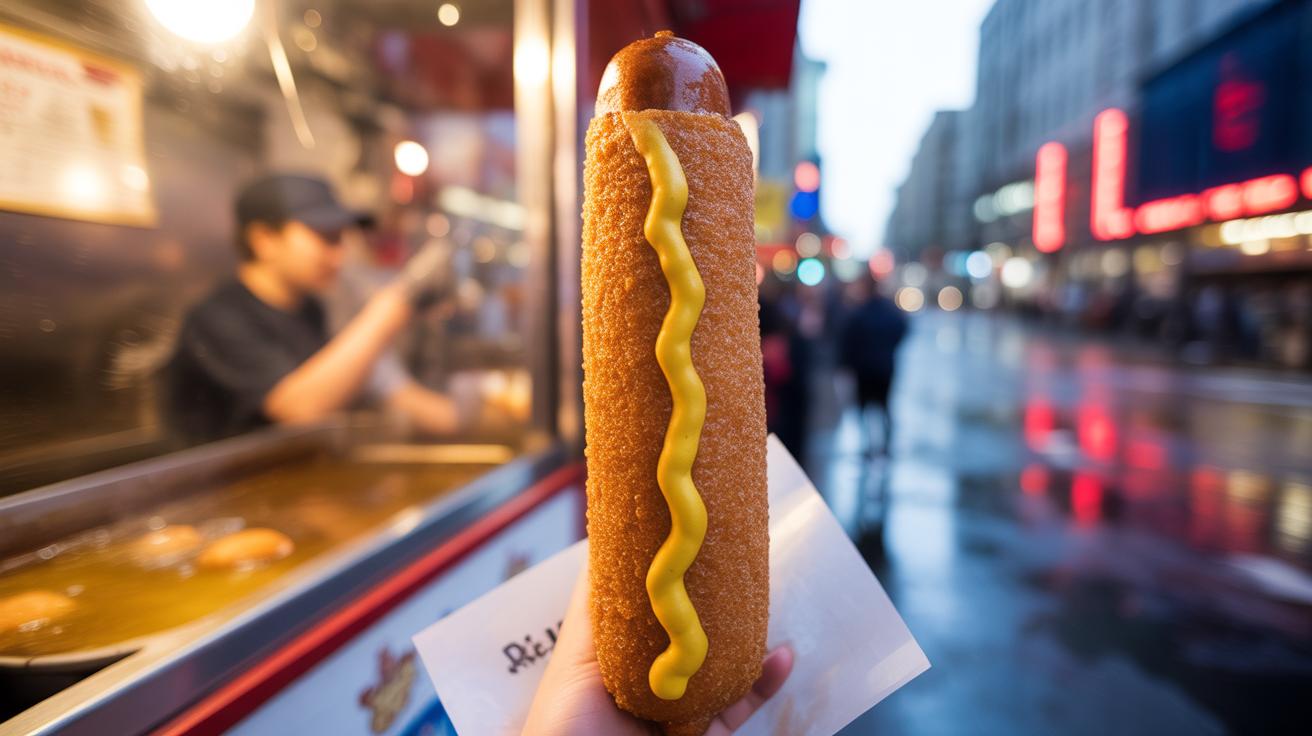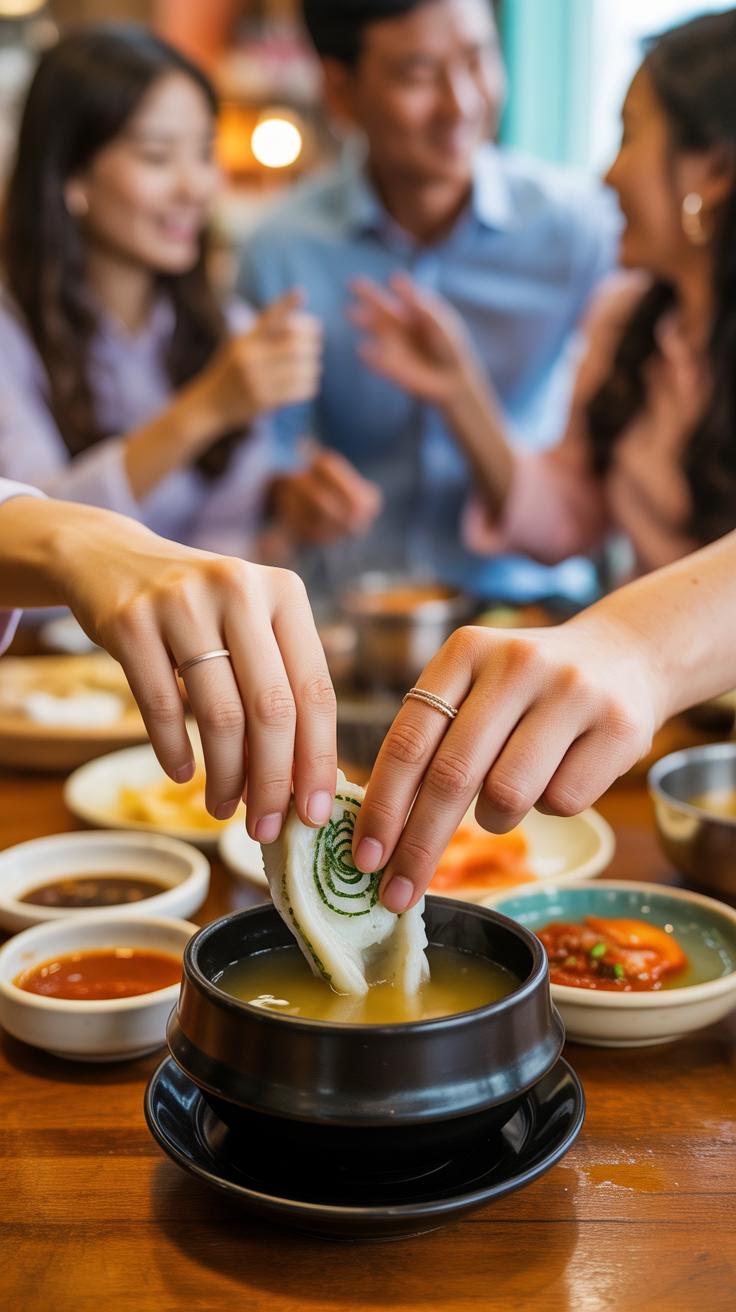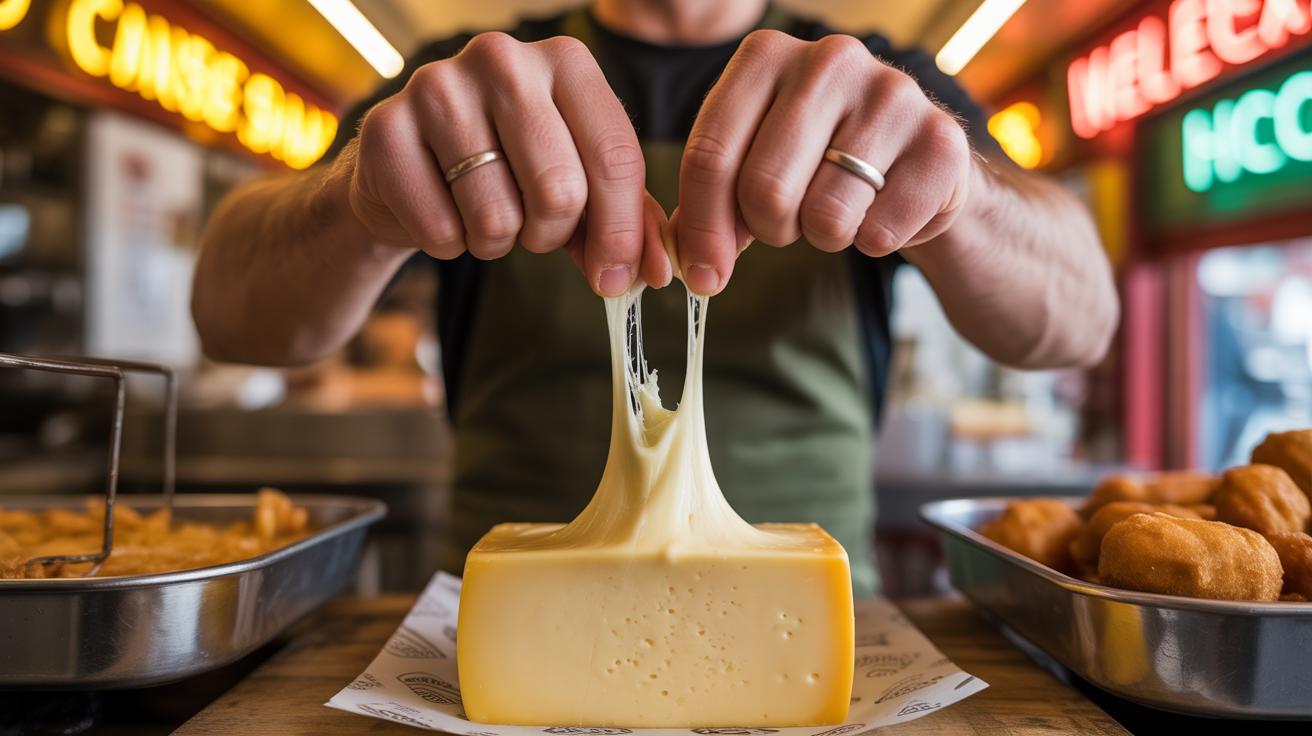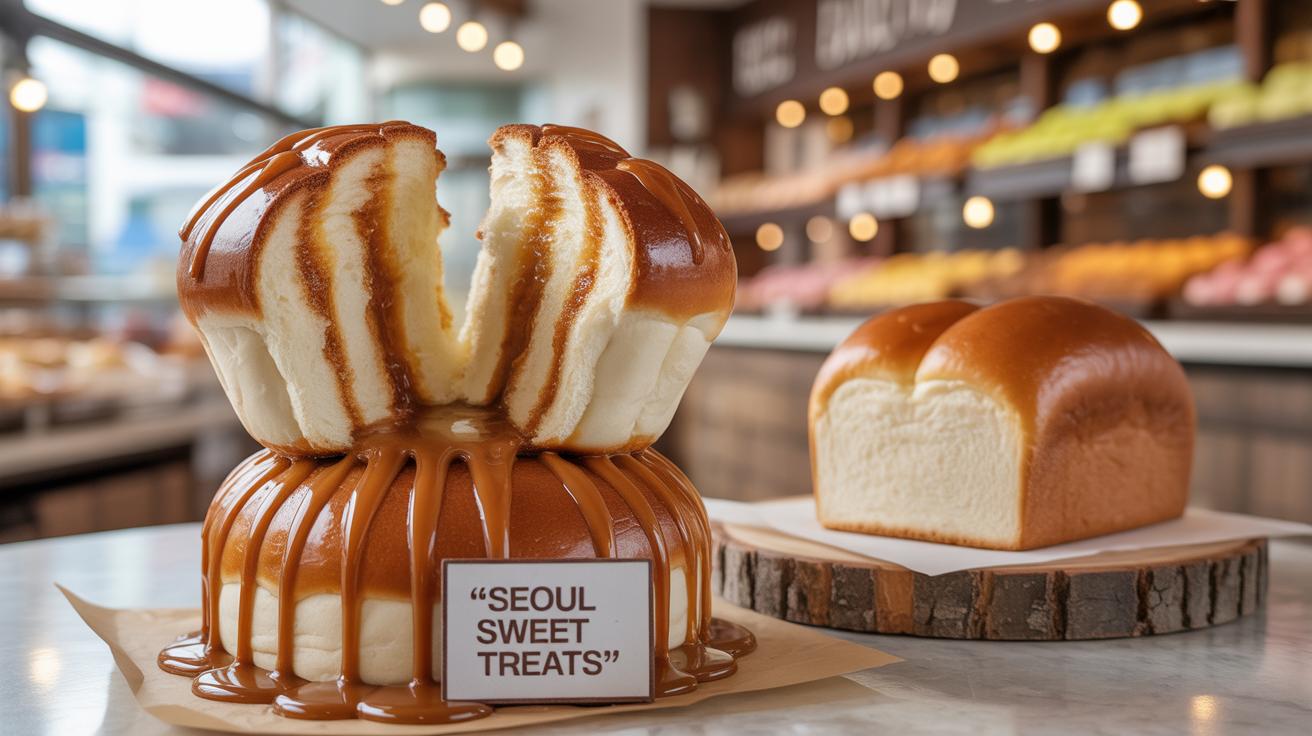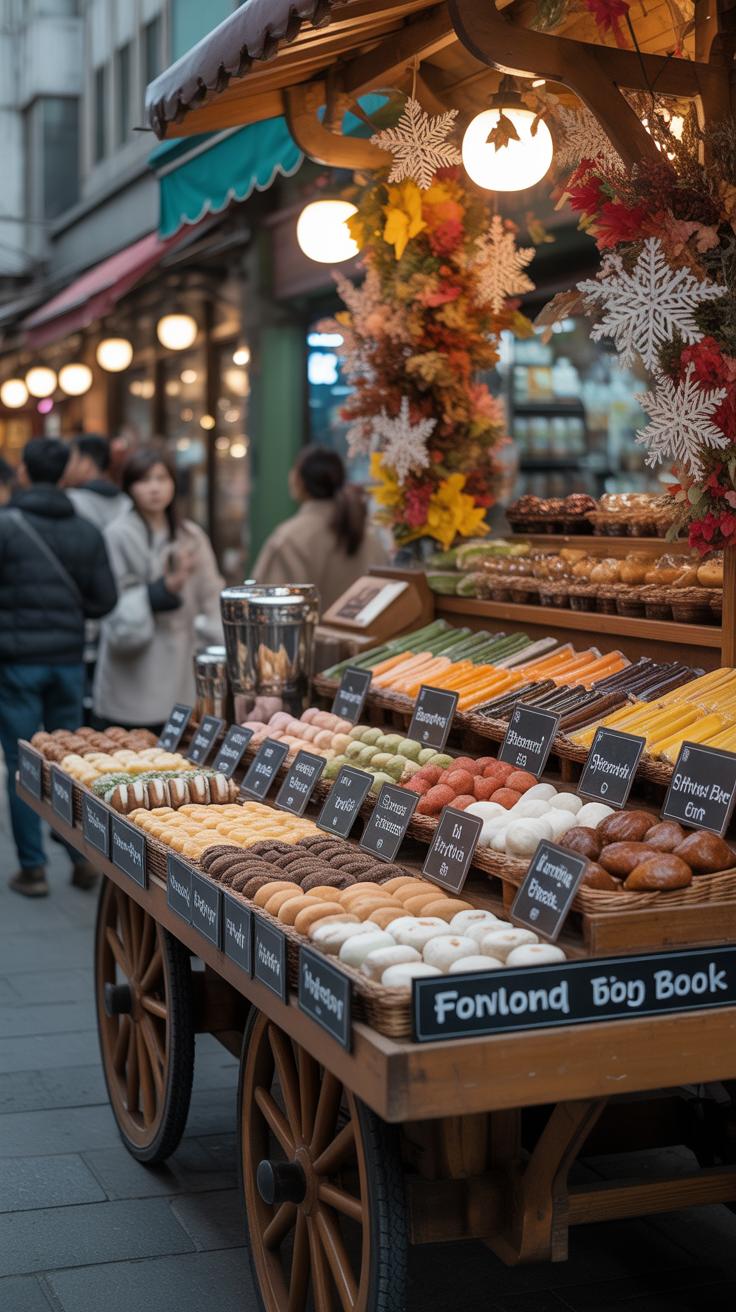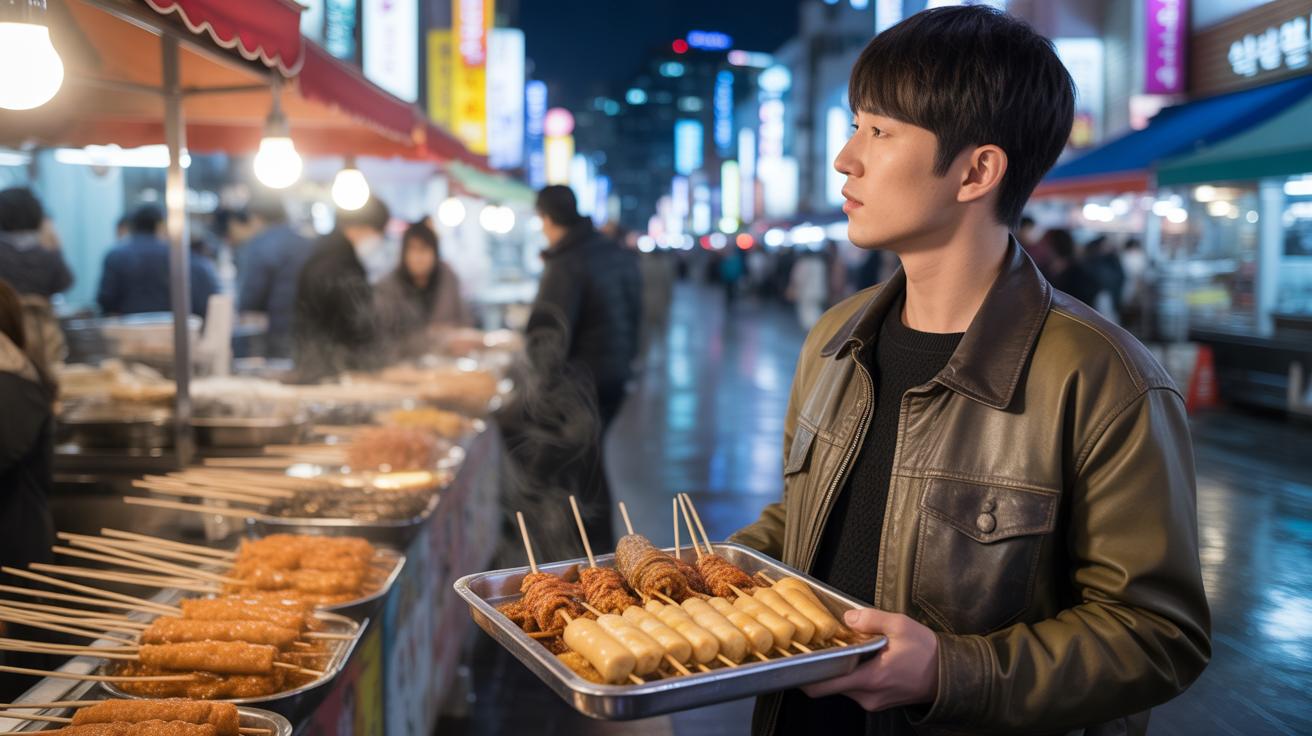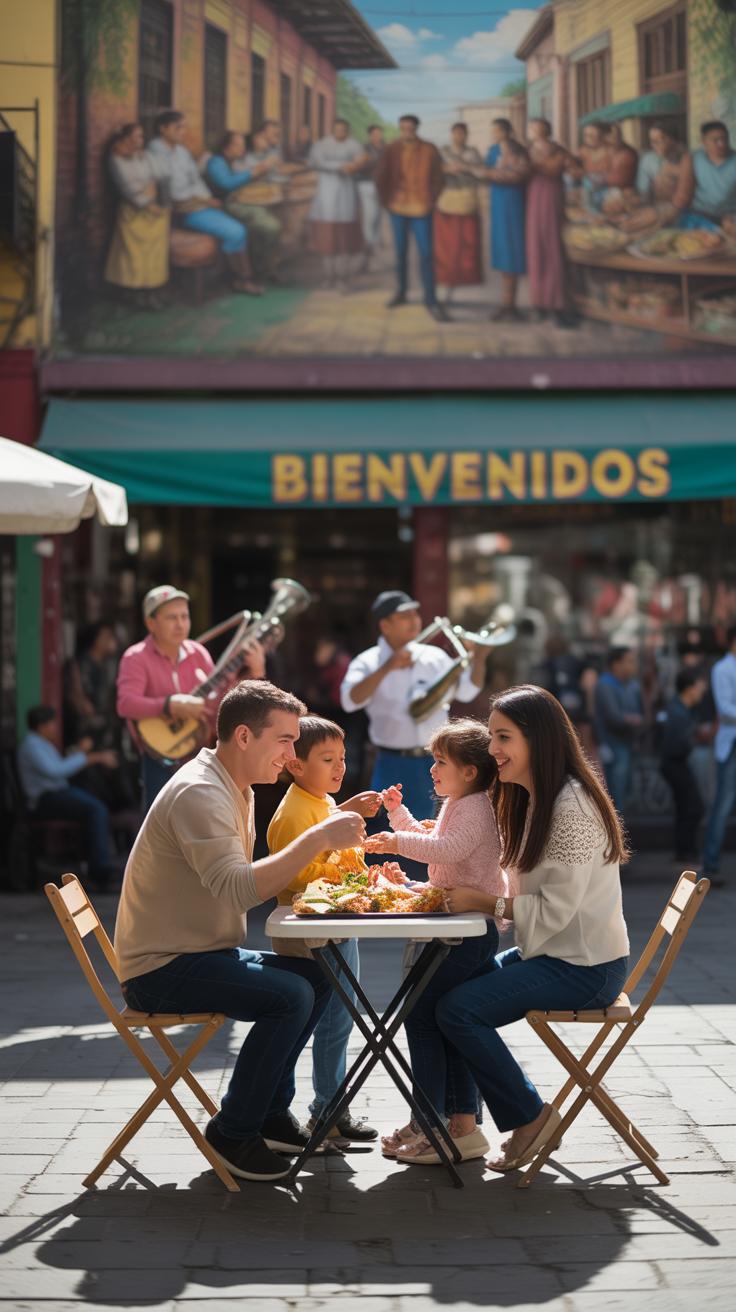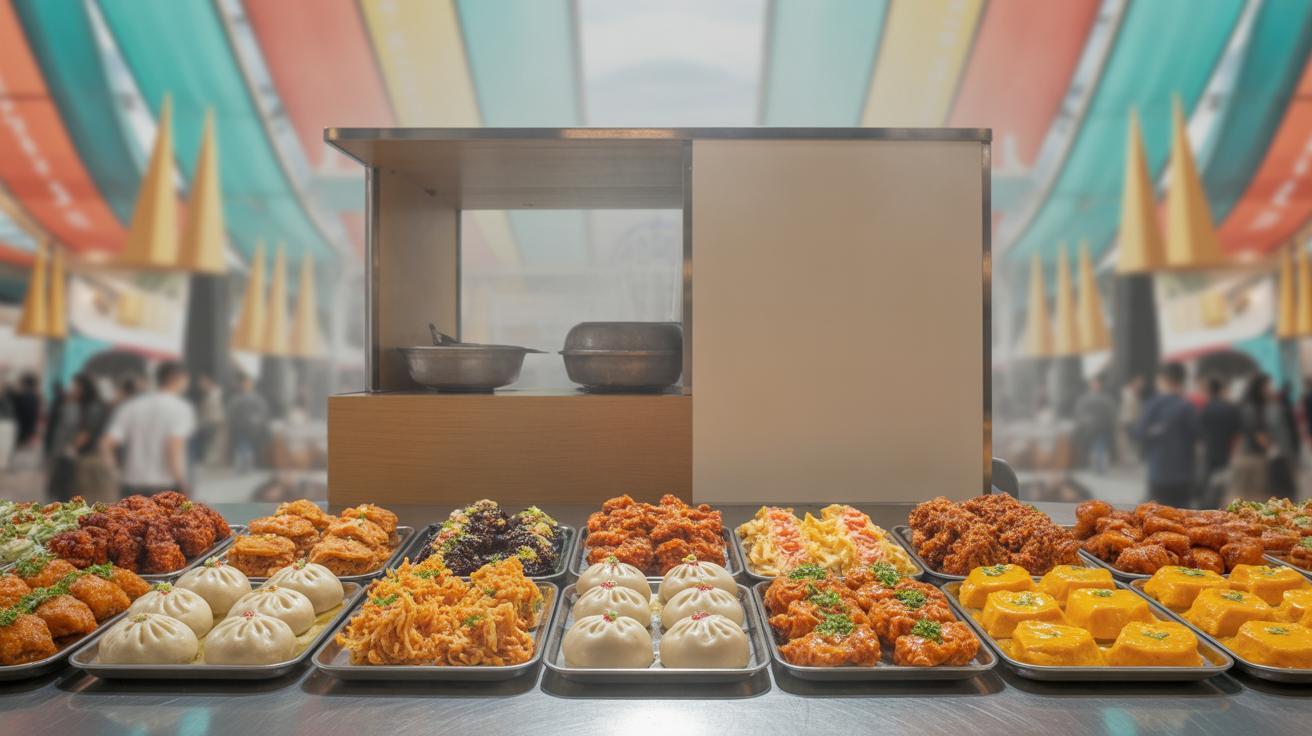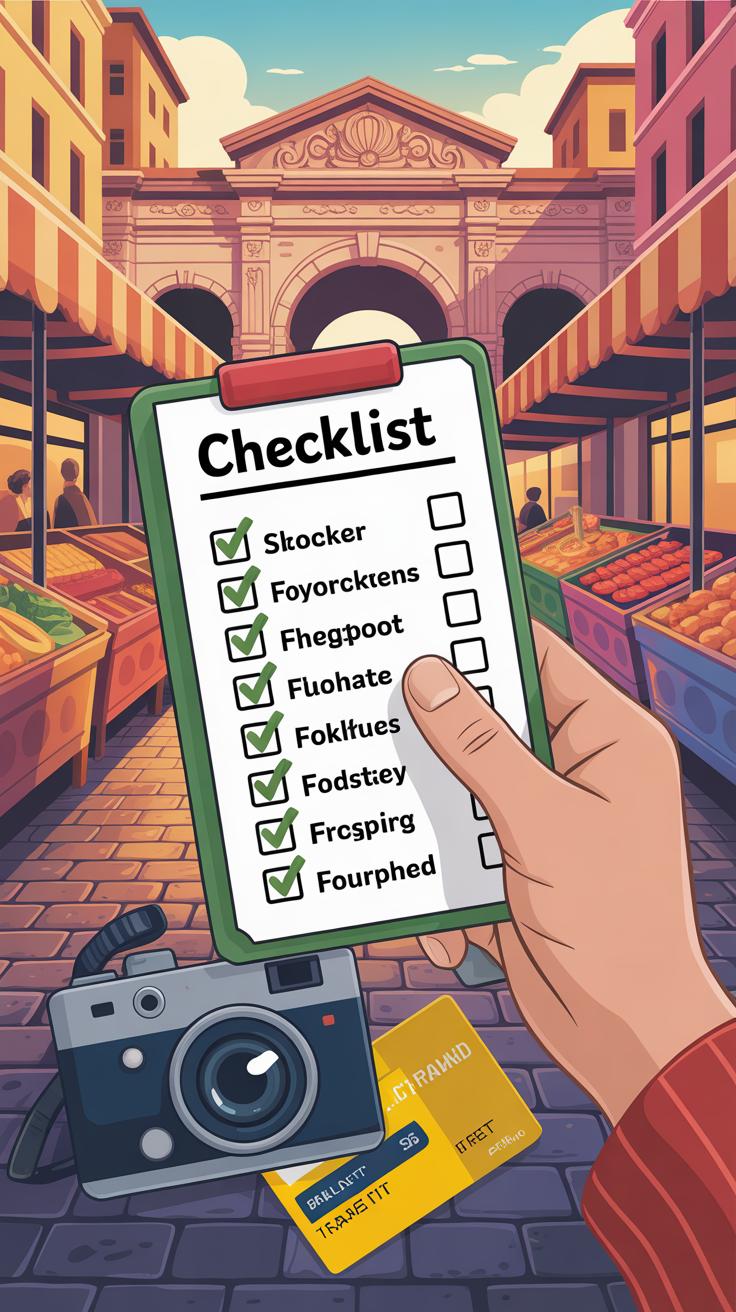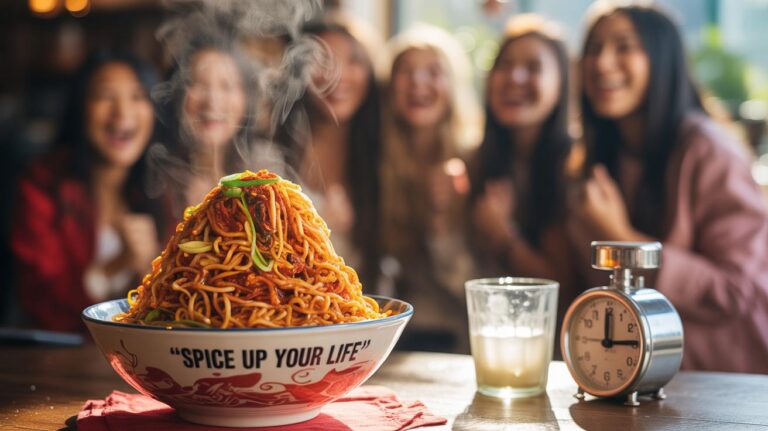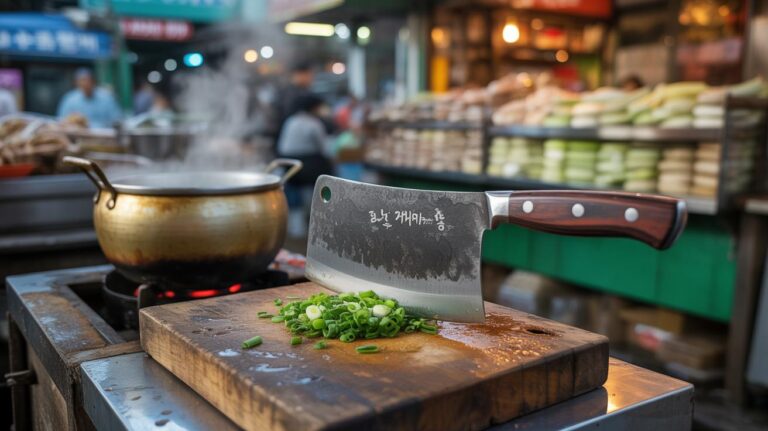Introduction
Korean street food offers a unique taste experience that draws travelers from around the world. It combines traditional Korean ingredients with cooking techniques designed for quick, delicious bites on the go. Street carts in Korea serve a variety of dishes that show the country’s rich culinary heritage. From spicy tteokbokki to savory hotteok, these foods provide a window into Korean culture and daily life.
Exploring street cart Korean food means sampling dishes full of flavor without the formality of a restaurant. The lively street markets bring together locals and visitors eager to eat fresh, affordable food. This article explores the popular street foods, the ingredients used, and how you can savor the best dishes during your travels in Korea.
History of Korean Street Food
Early Beginnings and Traditions
Street food in Korea traces back centuries, rooted deeply in daily life and communal gatherings. Long before modern food carts rolled onto city streets, vendors sold simple, portable meals to travelers, market-goers, and workers. Foods like hotteok (sweet pancakes filled with nuts and sugar) and bindaetteok (mung bean pancakes) emerged as quick snacks that fit the fast pace of life even then.
In villages and towns, street food was often tied to seasonal festivals and local customs—imagine warm, steamy rice cakes in winter or sweet rice puffs during harvest time. Street vendors moved around with hand-pulled carts or carried baskets, making their goods easily accessible. This practice reflected the Korean habit of socializing outdoors and eating on the go, long before formal restaurants became widespread.
Modern Developments and Popularization
As Korea urbanized through the 20th century, the face of street food shifted dramatically. Cities like Seoul became hubs where workers, students, and tourists craved quick, affordable, tasty bites. The post-war economic boom propelled street food to new heights, introducing dishes like tteokbokki (spicy rice cakes) that quickly became staples of the street cart scene.
The 21st century brought a fresh wave of interest in these casual eats, especially from travelers eager to experience authentic Korean flavors outside fancy restaurants. Street food markets evolved too, turning into vibrant spots that blend tradition with innovation—think fish-shaped pastries stuffed with red bean paste or new, spicy variations of classic snacks. For many visitors, these carts offer a genuine taste of Korea’s culinary soul, where every bite tells a story.
Common Ingredients in Korean Street Food
When you watch street vendors in Korea cooking up dishes, certain ingredients keep showing up, almost like the backbone of the cuisine. Rice cakes, known as *tteok*, are everywhere. They come in various shapes and textures but often share a chewy, satisfying bite that makes them perfect for skewers or simmering in broths.
Seafood is another key player. Squid, fish cakes, and small shellfish often headline street food menus. They add a delicate briny layer of flavor that contrasts nicely with the other ingredients. Vegetables like cabbage, scallions, and carrots also appear frequently, providing balance and freshness.
Staple Ingredients Like Rice Cakes and Seafood
Rice cakes provide substance. For example, *tteokbokki* revolves around these chewy cakes swimming in spicy sauce. Seafood such as squid or fried fish cakes brings texture and umami. You’ll often see vendors tossing scallions or shredded cabbage into dishes, offering crunch and a hint of sweetness that offsets richer components.
These ingredients pop up in many dishes, but their simplicity allows vendors to get creative with textures and combinations. It’s interesting to think that something as plain as rice cakes can become so versatile, right?
Spices and Sauces That Add Flavor
The magic mostly lies in the sauces. Gochujang—that fermented red chili paste—is a cornerstone. It not only adds heat but a deep, slightly sweet earthiness that lingers. Soy sauce is another base, bringing saltiness and a bit of sharpness.
Other flavor enhancers include minced garlic, a touch of sugar, sometimes sesame oil for nuttiness, and red pepper flakes for extra bite. It’s these layers, combined with the simple ingredients, that slap your taste buds awake. You might think street food has to be straightforward, but the complex balance here says otherwise.
Popular Korean Street Food Dishes
Spicy and Savory Favorites
When you think of Korean street food, tteokbokki often comes to mind first. These chewy rice cakes swim in a bright red sauce that’s simultaneously sweet, spicy, and a little tangy. The sauce feels thick and rich, clinging to each piece. Sometimes you’ll find fish cakes, boiled eggs, or even noodles mixed in, adding extra texture and flavor. It’s a dish that warms you up quickly, and you might find yourself craving it even after you’ve left the cart behind.
Then there’s hotteok – a sweet pancake, but with a twist. Imagine a crispy outside surrounding a warm, gooey center filled with brown sugar, nuts, and sometimes cinnamon. It’s not spicy, and actually quite comforting in a simple way. When you bite in, the melted filling oozes out, a bit messy but worth it. It’s one of those snacks you don’t expect to love until you actually try it. Hotteok often feels like a quick break from the more intense flavors of other dishes.
Sweet and Unique Treats
For something sweeter, bungeoppang is hard to miss. This fish-shaped pastry is filled usually with red bean paste, but you can find versions stuffed with custard or chocolate too. It looks playful—a little whimsical even—and offers a soft, slightly crispy exterior contrasted with the smooth filling inside. Perhaps it’s the shape or the warmth it carries, but bungeoppang often feels like comfort food amidst a bustling street scene.
Other sweet treats show up less frequently but are worth seeking out. For example, gyeran-ppang, a small bread with a whole egg baked inside, combines unexpected ingredients in a simple, satisfying way. Or hoddeok variants stuffed with sesame seeds and honey stretch the idea of sweets just a bit further, making you wonder how people came up with these recipes in the first place.
These dishes invite you to slow down, savor the moment, and maybe even debate which street snack deserves your next bite.
How to Find the Best Street Cart Food
Finding great Korean street food can sometimes feel like a bit of a treasure hunt. You might wander through popular neighborhoods filled with carts but still miss the truly memorable bites. So, where do you start? There are definitely hotspots known for their street food culture, places where locals and tourists cluster around the carts—often a good sign.
Popular Street Food Markets and Areas
Look for areas like Myeongdong in Seoul, famous for a dense concentration of street vendors. Then there’s Gwangjang Market, where traditional snacks mix with lively energy. Hongdae is another hotspot, especially in the evenings, with a younger crowd and eclectic choices. Busan’s Jagalchi Market also offers a coastal twist with fresh seafood carts. Each area has its own vibe and specialties, so variety depends on where you end up.
Tips for Choosing Quality Street Food Vendors
When you spot a crowded cart, that’s usually a positive sign—the food is good, or at least popular. But don’t just follow the crowd blindly. Check how the vendor handles ingredients and cooking. Are the surfaces clean? Is the food piled neatly or carelessly tossed around? These details matter more than you might expect.
Also, watch for vendors who prepare food fresh on the spot rather than just reheating. That difference often translates to better flavor and safety. And don’t hesitate to ask questions, even if your Korean isn’t perfect. A friendly vendor might share what’s fresh or recommend their favorite dish.
Sometimes, the carts with the fewest customers surprise you—maybe they specialize in a niche item or serve regulars who swear by their quality. So, while crowds can guide you, trust your instincts and senses too.
Eating Street Food Like a Local
Getting street food in Korea is a little ritual, not just a quick grab-and-go. When you step up to the cart, locals usually wait patiently, even when the line looks long. Jumping ahead is frowned upon—the subtle nod or a soft “jeogiyo” (excuse me) before ordering shows respect. You might notice people handing over cash directly; it’s polite to use both hands when paying or receiving your food. This simple gesture means you appreciate what’s being offered, even if it feels a bit formal.
Once you get your snack, the way people eat is often practical and social. Many stand around the cart or nearby benches, sharing their finds with friends. It’s common to split a portion or trade bites, especially if you’re with a group. If you’re alone, no worries—you can stand, nibble slowly, and observe the buzz around you. Walking while eating is okay, but locals tend to pause briefly, savor the flavors, then keep moving.
Don’t be surprised if some offer you a bite—that kind of sharing is part of the charm. Still, small acts matter: try not to hog space or linger too long once you’ve finished eating. Street food, after all, is made to be enjoyed on the move, but with a gentle rhythm that suits the pace of the street and the people on it.
Health and Safety Considerations
Eating Korean street food is an adventure, but it’s good to stay aware of a few health and safety things. You might be tempted by colorful dishes sizzling right in front of you, but ask yourself—does the stall look clean? Are the vendors wearing gloves or handling money and food separately? These little signs often hint at hygiene standards.
Look for stalls with a steady flow of customers. Busy carts usually mean fresher food and quicker turnaround, which limits how long food sits out. Also, if you notice uncovered food or flies hovering around, maybe give that one a pass. Sometimes fresh seafood stalls can be tricky. If the fish or shellfish don’t look firm or are stored improperly, avoiding those might save you a stomachache later.
Try to eat food that’s cooked hot and served without delay. Warm dishes tend to be safer than those sitting out cold for hours. Drinking bottled water rather than tap or street vendor water is a small but effective step toward keeping your trip enjoyable and illness-free. And if your stomach feels off after eating, don’t brush it off too quickly—sometimes a little rest helps more than pushing on to the next snack.
Is it worth risking a little discomfort for the thrill of tasting something new? Maybe. Just trust your instincts a bit. Staying mindful doesn’t mean missing out. It can make the experience better, I think—more relaxed and less worrisome.
Seasonal Street Foods in Korea
Street food in Korea shifts with the seasons, changing what you’ll find on every corner. In winter, the cold draws people toward warm, comforting snacks. Hotteok, a sweet syrup-filled pancake, steams from griddles, while spicy tteokbokki (rice cakes in chili sauce) offers warmth in every bite. You’ll also see vendors selling roasted chestnuts and sweet potatoes, their sweet aroma cutting through cold air. These foods feel like little hot pockets of comfort, perfect for chilly hands.
When summer arrives, the scene flips. Cold bingsu—shaved ice topped with beans, fruit, or condensed milk—is a popular choice to cool down. Refreshing drinks like sikhye, sweet rice punch, and cold noodles give relief from the heat. Some stalls sell ice cream or fruit skewers, light and easy treats for hot days.
Then there are festivals, where street food takes on a special role. At events like the Seoul Lantern Festival or traditional markets during Chuseok, you’ll find unique treats like jeon (savory pancakes) or wagashi-style rice cakes linked to the occasion. The food sometimes becomes less about quick bites and more about celebrating together. Ever wondered how street food connects to Korean festivities? It’s a mix of tradition and changing tastes that makes these moments distinct—something you won’t quite experience in regular markets.
Impact of Street Food on Korean Culture
Street Food as a Social Experience
Street food in Korea is more than just quick bites; it’s where people come together. You see groups of friends huddling near a cart, sharing tteokbokki or hotteok, chatting like they own the street. The vendors often know their customers, calling out familiar names, maybe cracking jokes. This informal setting makes eating out feel like a shared event, not just a transaction.
For many Koreans, grabbing street food isn’t only about hunger but about connection. Families, coworkers, even strangers often eat side by side. It’s common to see people holding their skewers or warm cups of sikhye, standing in the cold, talking endlessly. These moments foster a sense of belonging. Isn’t it interesting how food can bring people closer, without needing a fancy dining room?
Preserving Traditions Through Street Food
Street food carries recipes passed down through generations. Vendors often prepare dishes following old methods, sometimes their grandmothers’ secrets. Take eomuk soup or hotteok—simple ingredients but slow, careful preparation preserving those familiar flavors.
In some places, you can spot a seller flipping jeon or frying mandu much like people did decades ago. That continuity is part of what keeps tradition alive in a fast-changing society. It’s like a small, edible history lesson. Of course, some vendors play with new twists, but many still hold on to the original recipes, perhaps because those tastes are what keep their customers coming back.
Your Street Food Adventure in Korea
Getting ready to explore Korean street food means thinking a bit about timing and where to start—though honestly, you can’t go too wrong. Street stalls often come alive in the late afternoon and stay busy well into the evening. That’s when the food is fresh, the crowds are lively, and you get the full experience. If you catch the stalls too early, some menus might be limited, and late at night, options can dwindle. So, plan to arrive around 5 or 6 pm for the best variety.
Start simple. Things like tteokbokki, those spicy rice cakes, or hotteok, the sweet pancakes filled with nuts and brown sugar, are good first tastes. These dishes set the stage for bolder flavors without overwhelming your palate. It’s okay to pause and watch vendors work too—they often welcome questions or small chats. That connection can make the whole adventure feel more authentic.
Trying street food means accepting a little uncertainty. Some dishes might look strange or taste different from what you expect. Wanting to play it safe is normal, but sometimes the most unusual bites become the ones you remember. You might hesitate over a plate of sundae (Korean blood sausage), but stepping outside comfort zones often leads to surprising enjoyment.
Don’t rush. Sample slowly, listen to your tastes, and if you want, swap dishes with a friend—that way, you get a variety. And try to talk to locals or other travelers near the stalls; their recommendations can lead you to hidden gems you wouldn’t find alone. This isn’t just about food; it’s about discovering flavors directly tied to the streets of Korea, making your trip a bit richer.
Conclusions
Korean street cart food gives you a true taste of Korea’s culinary world. Each dish tells a story of tradition and flavor crafted for quick enjoyment. Street food stands offer you a chance to explore diverse tastes, from spicy to sweet, packed with local ingredients and cooking methods. The bustling street food scene is both a cultural experience and a meal adventure for travelers.
When you try Korean street food, you get more than just food—you get a connection to the people and their traditions. You learn to appreciate simple yet bold flavors made with ingredients like rice cakes, vegetables, seafood, and spices. Your journey through Korea becomes richer when you take the time to enjoy its street cart offerings. Let every bite be part of your travel story.

